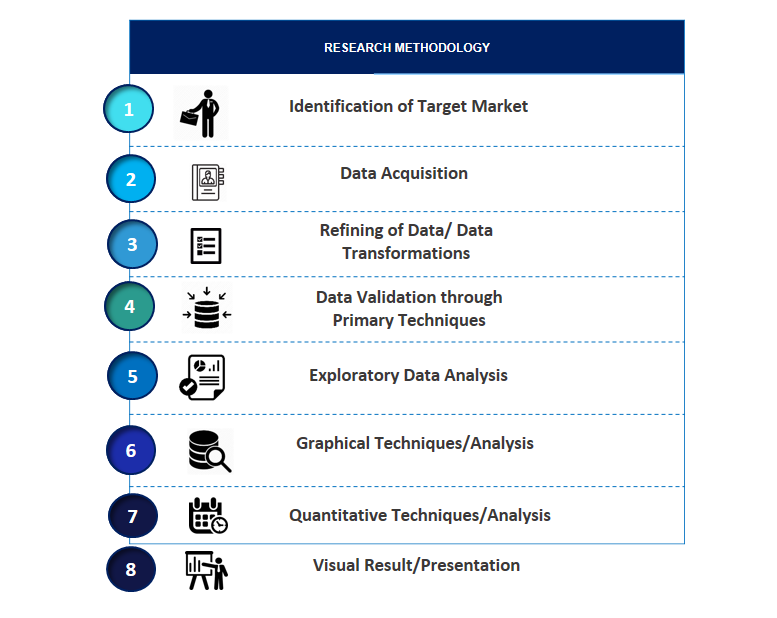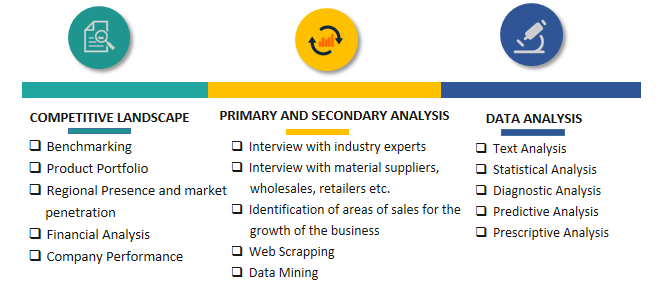Global Polylactic Acid Market Overview:
According to SPER Market Research, the Global Polylactic Acid Market is estimated to reach USD 3.63 billion by 2032 with a CAGR of 12.43%.
The thermoplastic polymers that are regularly available are different from the polymer composed of polylactic acid (PLA). Most of its components are renewable, like sugar cane. Due to its competitive price and a number of mechanical advantages over other biodegradable polymers, PLA is a widely used material. Typically, plant feedstocks including sugar cane, cassava, corn, and potatoes are used to make PLA. Greenhouse gas emissions, cellulosic materials, and agricultural by products have all been researched as possible feedstocks. Agriculture-related products are anticipated to continue being the major feedstock for starch blends and PLA for the foreseeable future, despite the fact that the process is still under development.
Impact of COVID-19 on the Global Polylactic Acid Market
Worldwide, the corona virus pandemic has had an impact on a number of businesses. In order to slow the pandemic's rapid spread, governments all across the world enacted stringent lockdown regulations and social segregation standards. During the covid early phases, production plants all over the world were closed down. Additionally, the economic downturn that followed the epidemic may cause a considerable delay in the commercial launch of the chemical sector. Since the pandemic's rise, small and medium-sized businesses, who are the backbone of technology providers, have seen a sharp decline in revenue.
Thus, once supply chain interruptions were noted, market participants faced a number of difficulties. However, when more supplies become available, things will become better. Based on the Quarterly Market Revenue Projected by Asia Pacific for recent years, the influence of COVID-19 on the market demand is taken into account when evaluating the present and forecast market size and growth patterns of the market for all regions and countries. Key Approaches Employed by Businesses to Address COVID-19, Long-Term Dynamics, and Short-Term Dynamics.

Scope of the Report:
| Report Metric | Details |
| Market size available for years | 2019-2032 |
| Base year considered | 2021 |
| Forecast period | 2022-2032 |
| Segments covered | By Application, By Grades, By End Users |
| Regions covered | North America, Europe, Asia Pacific, Latin America, Middle East and Africa |
| Companies Covered | BASF SE, COFCO, Corbion Purac, Danimer Scientific, Evonik Industries, Futerro, Hisun Biomaterials, Jiangxi Keyuan Bio-Material Co. Ltd., Mitsubishi Chemicals Corporation, Nature Works LLC, Shanghai Tong-Jie-Liang Biomaterials Co. Ltd., Synbra Technology BV, Toray Industries Inc., Total Corbion PLA, Unitika Ltd., Zhejiang Hisun Biomaterials Co. Ltd.
|
Global Polylactic Acid Market Segmentation:
By Application: Based on the Application, Global Polylactic Acid Market is segmented as; Bottles, Films & Sheets, Rigid Thermoforms, Others.
By Grades: Based on the Grades, Global Polylactic Acid Market is segmented as; Blow Molding Grade, Extrusion Grade, Injection Molding Grade, Thermoforming Grade, Other Grade.
By End User: Based on the End User, Global Polylactic Acid Market is segmented as; Agricultural, Biomedical, Consumer Goods, Packaging, Textile, Other End Use Industries.
By Region: North America is anticipated to account for a sizable portion of the global polylactic acid market. During the forecast period, an increase in demand for PLA from end-use sectors including packaging and electronics in emerging regions is anticipated to drive up demand for polylactic acids in Asia-Pacific.
1. Introduction
1.1. Scope of the report
1.2. Market segment analysis
2. Research Methodology
2.1 Research data source
2.1.1 Secondary data
2.1.2 Primary data
2.1.3 SPER’s internal database
2.1.4 Premium insight from KOL’s
2.2 Market size estimation
2.2.1 Top-down and Bottom-up approach
2.3 Data triangulation
3. Executive Summary
4. Market Dynamics
4.1. Driver, Restraint, Opportunity and Challenges analysis
4.1.1 Drivers
4.1.2 Restraints
4.1.3 Opportunities
4.1.4 Challenges
4.2. COVID-19 Impacts of the Global Polylactic Acid Market
5. Market variables and outlook
5.1. SWOT analysis
5.1.1 Strengths
5.1.2 Weaknesses
5.1.3 Opportunities
5.1.4 Threats
5.2. PESTEL analysis
5.2.1 Political landscape
5.2.2 Economic landscape
5.2.3 Social landscape
5.2.4 Technological landscape
5.2.5 Environmental landscape
5.2.6 Legal landscape
5.3. PORTER’S five forces analysis
5.3.1 Bargaining power of suppliers
5.3.2 Bargaining power of Buyers
5.3.3 Threat of Substitute
5.3.4 Threat of new entrant
5.3.5 Competitive rivalry
5.4. Heat map analysis
6. Global Polylactic Acid Market, By Application, 2019-2032 (USD Million)
6.1. Bottles
6.2. Films & Sheets
6.3. Rigid Thermoforms
6.4. Others
7. Global Polylactic Acid Market, By Grades, 2019-2032 (USD Million)
7.1. Blow Molding Grade
7.2. Extrusion Grade
7.3. Injection Molding Grade
7.4. Thermoforming Grade
7.5. Other Grade
8. Global Polylactic Acid Market, By End User, 2019-2032 (USD Million)
8.1. Agricultural
8.2. Biomedical
8.3. Consumer Goods
8.4. Packaging
8.5. Textile
8.6. Other End Use Industries
9. Global Polylactic Acid Market, By Region, 2019-2032 (USD Million)
9.1 North America
9.1.1 United States
9.1.2 Canada
9.1.3 Mexico
9.2 Europe
9.2.1 Germany
9.2.2 United Kingdom
9.2.3 France
9.2.4 Italy
9.2.5 Spain
9.2.6 Rest of Europe
9.3 Asia-Pacific
9.3.1 China
9.3.2 Japan
9.3.3 India
9.3.4 Australia
9.3.5 South Korea
9.3.6 Rest of Asia-Pacific
9.4 South America
9.4.1 Brazil
9.4.2 Argentina
9.4.3 Rest of South America
9.5 Middle East & Africa
9.5.1 Kingdom of Saudi Arabia
9.5.2 United Arab Emirates
9.5.3 Rest of Middle East & Africa
10. Company Profiles
10.1 BASF SE
10.1.1 Company details
10.1.2 Financial outlook
10.1.3 Product summary
10.1.4 Recent developments
10.2 COFCO
10.2.1 Company details
10.2.2 Financial outlook
10.2.3 Product summary
10.2.4 Recent developments
10.3 Corbion Purac
10.3.1 Company details
10.3.2 Financial outlook
10.3.3 Product summary
10.3.4 Recent developments
10.4 Danimer Scientific
10.4.1 Company details
10.4.2 Financial outlook
10.4.3 Product summary
10.4.4 Recent developments
10.5 Evonik Industries
10.5.1 Company details
10.5.2 Financial outlook
10.5.3 Product summary
10.5.4 Recent developments
10.6 Futerro
10.6.1 Company details
10.6.2 Financial outlook
10.6.3 Product summary
10.6.4 Recent developments
10.7 Hisun Biomaterials
10.7.1 Company details
10.7.2 Financial outlook
10.7.3 Product summary
10.7.4 Recent developments
10.8 Jiangxi Keyuan Bio-Material Co. Ltd.
10.8.1 Company details
10.8.2 Financial outlook
10.8.3 Product summary
10.8.4 Recent developments
10.9 Mitsubishi Chemicals Corporation
10.9.1 Company details
10.9.2 Financial outlook
10.9.3 Product summary
10.9.4 Recent developments
10.10 Nature Works LLC
10.10.1 Company details
10.10.2 Financial outlook
10.10.3 Product summary
10.10.4 Recent developments
10.11 Shanghai Tong-Jie-Liang Biomaterials Co. Ltd.
10.11.1 Company details
10.11.2 Financial outlook
10.11.3 Product summary
10.11.4 Recent developments
10.12 Synbra Technology BV
10.12.1 Company details
10.12.2 Financial outlook
10.12.3 Product summary
10.12.4 Recent developments
10.13 Toray Industries Inc.
10.13.1 Company details
10.13.2 Financial outlook
10.13.3 Product summary
10.13.4 Recent developments
10.14 Total Corbion PLA
10.14.1 Company details
10.14.2 Financial outlook
10.14.3 Product summary
10.14.4 Recent developments
10.15 Unitika Ltd.
10.15.1 Company details
10.15.2 Financial outlook
10.15.3 Product summary
10.15.4 Recent developments
10.16 Zhejiang Hisun Biomaterials Co. Ltd.
10.16.1 Company details
10.16.2 Financial outlook
10.16.3 Product summary
10.16.4 Recent developments
SPER Market Research’s methodology uses great emphasis on primary research to ensure that the market intelligence insights are up to date, reliable and accurate. Primary interviews are done with players involved in each phase of a supply chain to analyze the market forecasting. The secondary research method is used to help you fully understand how the future markets and the spending patterns look likes.
The report is based on in-depth qualitative and quantitative analysis of the Product Market. The quantitative analysis involves the application of various projection and sampling techniques. The qualitative analysis involves primary interviews, surveys, and vendor briefings. The data gathered as a result of these processes are validated through experts opinion. Our research methodology entails an ideal mixture of primary and secondary initiatives.


